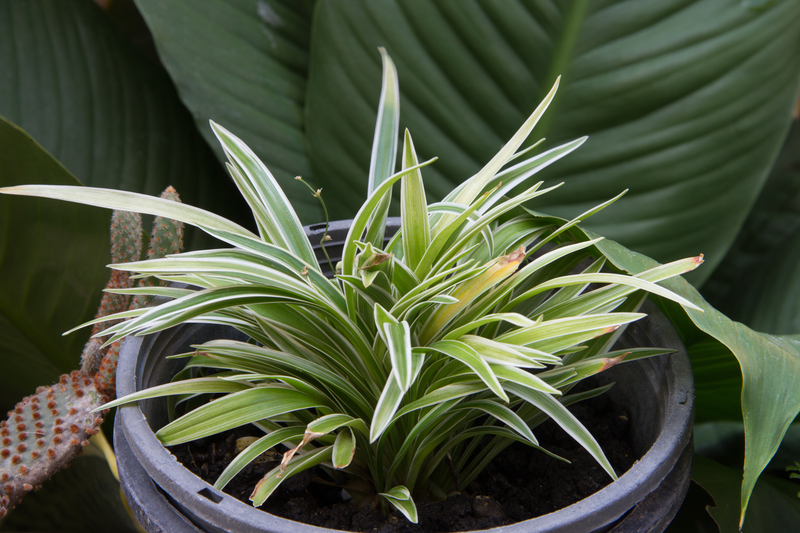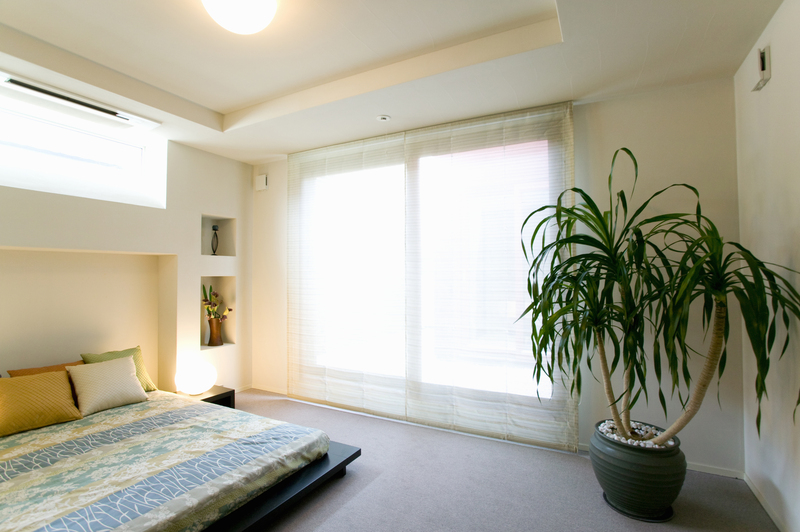Vertical Gardening: A New Green Revolution
Posted on 28/09/2025
Vertical Gardening: A New Green Revolution
Vertical gardening is redefining our relationship with urban spaces, transforming once-bare walls and limited yards into vibrant, green sanctuaries. As cities expand and outdoor spaces shrink, this innovative method of growing plants upwards rather than outwards has emerged as a revolutionary solution to urban agriculture, environmental sustainability, and enhancing quality of life. In this comprehensive guide, we'll explore the vertical gardening revolution, its benefits, methods, and tips for bringing living greenery into your home, office, or community.
What is Vertical Gardening?
Vertical gardening, sometimes called green wall gardening or vertical planting, involves cultivating plants on a vertical surface--such as a wall, fence, trellis, or specially designed panel systems. Unlike traditional gardening, which relies on horizontal ground space, vertical gardens utilize the height and structure of buildings, making them ideal for urban environments with minimal land availability.
Brief History of Vertical Gardens
The concept of growing plants vertically is not new. The Hanging Gardens of Babylon, one of the Seven Wonders of the Ancient World, is an early example of using architecture to support lush greenery. In modern times, architect and botanist Patrick Blanc popularized living walls in the late 20th century, bringing vertical gardens to cityscapes worldwide.

Why Vertical Gardening is the New Green Revolution
Urbanization has led to limited green spaces, increased pollution, and greater demand for locally-grown produce. Vertical gardens efficiently address these concerns, which is why many experts refer to this trend as the "new green revolution." Explore the top reasons vertical gardening is transforming the future:
- Maximizes space: Perfect for small balconies, patios, rooftops, and interior walls.
- Improves air quality: Green walls act as natural air filters, reducing airborne toxins and dust.
- Reduces heat and energy costs: Plants provide insulation and help regulate building temperatures.
- Increases food security: Fresh, local herbs, vegetables, and fruits can be grown year-round.
- Aids biodiversity: Attracts pollinators like bees and butterflies even in dense urban areas.
- Enhances mental health: Closer contact with nature is linked to reduced stress and improved well-being.
Vertical Gardening Methods & Systems
The versatility of vertical gardens means there are systems suitable for every skill level, budget, and space. From DIY planters to sophisticated hydroponic walls, here's a rundown of popular techniques:
1. Trellis and Climbing Structures
Traditional garden trellises and arbors allow climbing plants like beans, peas, and flowering vines to grow upright. These are affordable, easy to install, and suitable for both outdoor and indoor gardens.
2. Modular Panel Systems
Commercial and residential buildings often use modular panels or stacked planter boxes mounted on walls. These support a wide variety of plants and can incorporate built-in irrigation and nutrient systems.
3. Pocket Planters
Made from durable fabrics, felt, or recycled materials, pocket panels are attached to walls and filled with soil. They are ideal for herbs, succulents, strawberries, and leafy greens.
4. Hydroponic Vertical Gardens
Hydroponic methods use water and nutrient solutions instead of soil, enabling faster plant growth and reducing pests. These systems are often seen in commercial vertical farms for producing lettuce, leafy greens, and herbs.
5. Pallet Gardens
Repurposed wooden pallets make excellent frameworks for vertical gardens. They offer a rustic aesthetic and are suitable for both edible and ornamental plantings, making them a favorite for DIY enthusiasts.
6. Gutter Gardens
Recycled rain gutters can be mounted on fences or walls to grow greens, flowers, and small vegetables. This method is budget-friendly and perfect for maximizing small vertical spaces.
Best Plants for Vertical Gardening
Choosing the right plants is crucial to the success of your vertical gardening project. Consider factors such as sunlight, weight, maintenance, and how the plants will look as they grow. Here are some top choices:
- Herbs: Basil, mint, parsley, thyme, chives, oregano
- Leafy greens: Lettuce, spinach, arugula, kale, Swiss chard
- Fruiting plants: Strawberries, cherry tomatoes, dwarf peppers, small cucumbers
- Succulents: Sedum, echeveria, burro's tail, jade plants
- Flowering varieties: Petunias, fuchsias, nasturtiums, pansies, morning glories
- Vines and climbers: Beans, peas, passionflower, clematis
Pro Tip: Opt for plants that have compact growth, shallow root systems, and similar sun or water requirements to ensure thriving results.
Starting Your Own Vertical Garden: Step-by-Step Guide
Ready to join the vertical gardening revolution? Follow these steps to design and cultivate your own lush, space-saving garden:
1. Assess Your Space
- Locate a wall, fence, or barrier that can support the weight of your garden.
- Consider sunlight exposure--most herbs and veggies need 6+ hours per day.
- Ensure easy access for watering and harvesting.
2. Choose Your Vertical Gardening System
- For beginners, pocket planters, trellises, or pallet gardens are simple to install.
- Hydroponic or modular panel systems offer higher yields for serious growers.
3. Select Suitable Plants
- Research which plants thrive in your climate and selected system.
- Mix textures and colors for visual interest.
4. Prepare the Structure
- Install the framework securely--use appropriate fasteners and reinforce if necessary.
- Line pockets or planters with quality potting mix or hydroponic growing medium.
5. Plant and Install Irrigation
- Arrange plants to allow for growth, airflow, and access to light.
- Install a drip or trickle irrigation system for easy maintenance, or set up manual watering routines.
6. Maintain and Enjoy
- Monitor for pests, nutrient deficiencies, and over/under watering.
- Harvest regularly to promote new growth and keep plants compact.
- Prune or replace plants as needed to maintain aesthetics.
With these steps, you can transform any vertical surface into a lush, productive garden.
Benefits of Vertical Gardening
The advantages of vertical gardening extend far beyond aesthetics. Here's why this trend is gaining ground in cities, homes, workplaces, and even schools:
Environmental Impact
- Cleaner air: Vertical gardens absorb carbon dioxide and release oxygen.
- Urban cooling: Living walls help lower temperatures, mitigating the urban heat island effect.
- Stormwater management: Green walls absorb rainwater, reducing runoff and flooding risks.
Economic Perks
- Energy savings: Extra insulation lowers heating and cooling costs for buildings.
- Increased property value: Vertical gardens and living walls make homes and businesses more attractive to buyers and tenants.
- Potential for income: Community vertical gardens can yield fresh, organic produce for sale.
Health and Well-being
- Stress reduction: Greenery is proven to decrease anxiety and improve focus.
- Access to fresh food: Grow your own herbs and vegetables free from pesticides.
- Physical activity: Gardening promotes movement and a sense of accomplishment.
Vertical Gardening in Urban Agriculture and Food Security
As people become increasingly aware of the importance of food security and local supply chains, urban vertical gardens are emerging as micro-farms. Rooftops, balconies, and community centers are being repurposed to produce healthy, organic, and local produce.
Projects like Singapore's vertical farms and indoor growing systems in New York City and Tokyo demonstrate the potential for large-scale urban agriculture. These initiatives reduce transportation costs, shrink carbon footprints, and ensure access to nutritious food even in densely populated areas.
Design Inspiration: Vertical Gardening Ideas for Every Space
Ready to green your surroundings? Here are creative vertical gardening ideas for various spaces:
- Apartment balconies: Stackable pots, magnetic planters, or railing-mounted troughs for herbs and strawberries.
- Living room walls: Artistic frames with succulent mosaics or modular panels featuring air-purifying plants.
- Office spaces: Freestanding green dividers to bring nature indoors and improve focus.
- Outdoor fences: Climbing roses, clematis, and creative upcycled shoe organizers filled with colorful annuals.
- Rooftop gardens: Large-scale hydroponic vertical towers yielding year-round fresh produce.
Troubleshooting Common Vertical Gardening Challenges
While the vertical gardening trend is booming, it's not without its challenges. Here's how to address the most frequent issues:
1. Watering difficulties
Vertical systems dry out faster than the ground. Use self-watering planters or install drip irrigation to keep moisture levels consistent.
2. Unstable structures
Always anchor installations securely, especially on windy balconies or rooftops. Use brackets, screws, or heavy bases for safety.
3. Plant health and overcrowding
Space plants appropriately to allow growth and prevent mold or disease. Rotate crops and prune regularly for optimal health.
4. Insufficient sunlight
If natural light is limited, especially indoors, use LED grow lights or move planters seasonally to catch maximum sunshine.

The Future: Smart Vertical Gardening and Urban Greening
The next wave in the vertical gardening revolution is smart gardens--systems equipped with sensors, automated watering, and even vertical farming robots. These innovations will further democratize gardening, making it more accessible, productive, and eco-friendly than ever before.
Cities around the globe are also integrating vertical greenery into urban design--from green facades on skyscrapers to eco-friendly bus stops. This not only beautifies concrete jungles but also supports biodiversity, fights climate change, and enhances urban life.
Conclusion: Embrace the Vertical Gardening Revolution
Vertical gardening is more than a trend--it's a transformative movement at the heart of the new green revolution. By reimagining how we use space, it empowers individuals, communities, and cities to grow more food, improve the environment, and boost well-being. Whether you're an urban dweller, a gardener at heart, or an eco-conscious designer, vertical gardening offers a world of possibilities one wall at a time.
Start your own vertical garden today and watch as your world grows greener, fresher, and more inspiring--vertically!
Want to learn more?
Check out resources from urban gardening organizations, online gardening forums, or local nurseries for vertical gardening ideas, workshops, and supplies. The future is green, upright, and within your reach.



